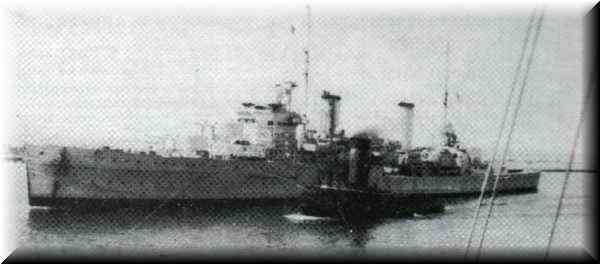[ Page 54 ]
Conclusion.(2) The original name of the ship, as a Merchant vessel. eg "Atlantis," had been "Goldenfels."(3) The actual name that was given to the Raider, usually by the particular Captain who was first in command. Rogge had christened his Raider, "Atlantis."
(4) A number prefaced by Ship, used by SKL in both signals and correspondence.
(5) There was an HSK number, used to identify a Raider undergoing her conversion, and In dockyard hands.
In this wartime saga of the sea, we have traversed the whole gamut of human expcricnce- and have witnessed many traits of mankind: - courage, foolishness, bravery, tenacity, power, stubbornness, cunning, pride, thoroughness - the apparent differences in races: - eg. between the Germanic and British people, discipline, boredom, endurance, the urge to fight for survival, etc, etc.
The one lesson that needs to be heeded is :- "War is profligate with people, time, money, and materiel, it is utterly futile. Peace is an investment for mankind, and needs to be pursued at all costs."
Post Script.
The Liberall National Party Coalition was returned to Government with a greatly reduced majority in the Lower House, but will not control the Senate, where minor parties hold the balance of power.
The new Parliament will not meet in Canberra until early in November, 1998. We have yet to learn whether the "Sydney" enquiry will be reconvened, and the fate of the evidence taken prior to the last Parliament being dissolved.

H.M.A.S. Sydney - At Fremantle in late 1941 - One of the last photographs of H.M.A.S Sydney
Press report about the Parliamentary Committee enquiring into the loss of HMAS Sydney.
The Melbourne Age of Tuesday 23rd. of March 1999, reported that the Joint Standing Committee on Foreign Affairs, Defence and Trade that was asked in August 1997, to examine the circumstances surrounding the sinking and loss of HMAS Sydney on the evening of November 1944 ~ has recommended to the Federal Government: -
This Committee also found(a) An attempt should be made to find the grave of the body of an unknown Australian sailor found on a raft near Christmas Island in 1941 and buried on that island, and that DNA testing should be used to try to identify him.(b) That the Federal Government should provide up to $2 Million to match $2 Million in public donations to pay for a search for the vessel off Western Australia.
Finally, the Committee said, the law should be changed to give researchers access to some 21.6 kilometers of shelving, holding documents covering WW2, and held in archives, in case they held clues to Sydney's fate.(a) No convincing evidence that a Japanese Submarine sank the cruiser.(c) Or that the Royal Australian Navy, the Admiralty, or the Australian Government had been involved in a conspiracy to hide the ship's fate from the public.
Part of the mythology surrounding Sydney and her loss, held that there was "a box or a vault somewhere, filled with all the missing Sydney papers."
"Whilst we cannot rule out material being misplaced (through human error ) there has been no sign that material had been deliberately concealed."
We now await any reaction by the Federal Government to these recommendations and observations from this Committee!
MJG. 25 March 1999.

This site was created as a resource for educational use and the promotion of historical awareness of the Gustloff and associated events. All rights of publicity of the individuals named herein are expressly reserved, and, should be respected consistent with the reverence in which this memorial site was established.
Copyright © 1984/1999 Computrain All rights reserved